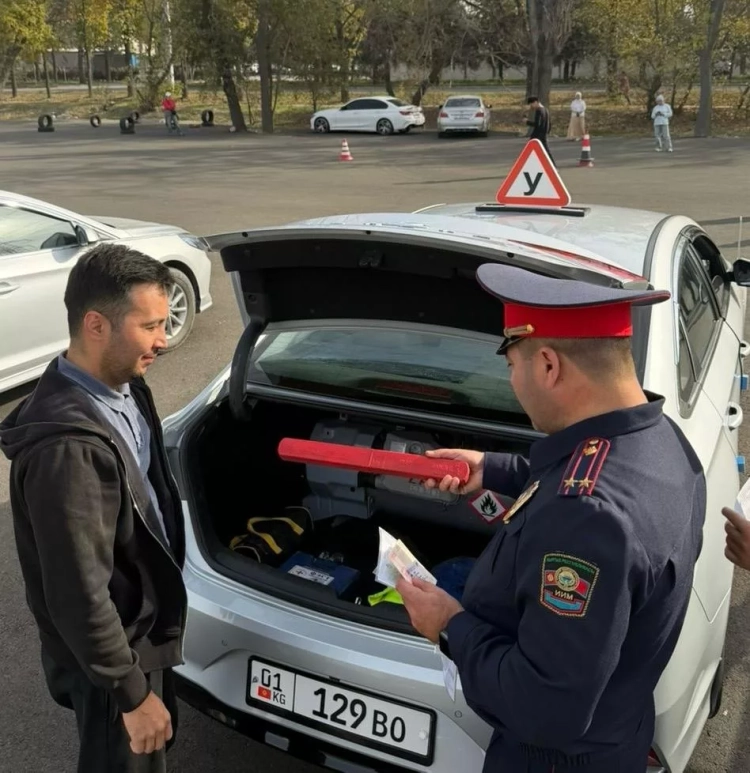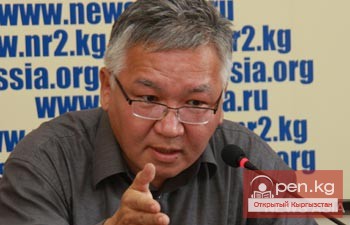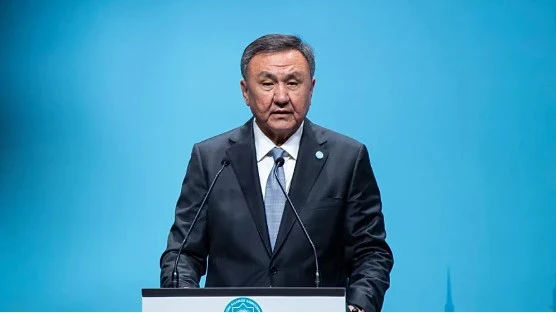
Not considering any state or coalition of states as its adversary, and opposing the use of...

Kyrgyzstan — Uzbekistan...

On December 27, 1991, the Government of the People's Republic of China recognized the...

Kyrgyzstan — SCO...

On May 29, 1992, by decree of the President of the Kyrgyz Republic, the units and parts of the...

The invasion of illegal armed formations of the Islamic Movement of Uzbekistan into the southern...

The administrative-territorial demarcation of the republics of the former USSR predetermined the...

Kyrgyzstan borders one of the most developed regions of Kazakhstan — Almaty. This proximity...

The development of relations between Kyrgyzstan and European countries opens the way for...

Kyrgyzstan is a state in the Central Asian region, whose location has significant geopolitical and...

In accordance with the Military Doctrine, the implementation of military construction plans is...

On November 7, 2014, in the city of Astana, the 4th meeting of the Supreme Intergovernmental...

Sovereign Kyrgyzstan is an equal member of the international community. One of the most important...

Kyrgyzstan borders Kazakhstan, Uzbekistan, and Tajikistan — friendly states that are close in...

Guided by the principles of creating a unified educational space with neighboring countries,...

First Wartime Plan On June 30, 1941, the Council of People's Commissars of the USSR approved...

Today, October 24, 2014, the President of the Kyrgyz Republic, Almazbek Atambayev, congratulated...

Foreign Ministers of Central Asia Discussed Security Issues in the Region The foreign ministers of...

The invasion of illegal armed formations of the Islamic Movement of Uzbekistan into the southern...

KAZAKHSTAN. Republic of Kazakhstan A state in the center of Eurasia. Area - 2,724.9 thousand km²....
The Deputy Chairman of the Security Council of Russia, Dmitry Medvedev, announced the transfer of...

The USA was among the first to recognize the independence of Kyrgyzstan, establishing diplomatic...

Today, November 24, 2014, an Agreement was signed between the Government of the Kyrgyz Republic...

During the period in question, Kyrgyzstan was unable to conduct any foreign policy. However,...

On Monday, November 16, the I Bishkek Forum "Kyrgyzstan: Alarming Prospects in the Field of...
Military personnel of the Armed Forces of the Kyrgyz Republic marched in a solemn parade across...

Date: from 25-MAR-15 to 27-MAR-15 City: Bishkek 13th Kyrgyz International Exhibition...

Today, October 24, 2014, the President of the Kyrgyz Republic, Almazbek Atambayev, signed a decree...

In order to enhance road safety and reduce the number of traffic accidents, as well as to regulate...

“The events occurring in the Afghan city of Kunduz may subsequently threaten not only the security...

Iran is considering the possibility of joining the Eurasian Economic Union and also intends to...

Kyrgyzstan became a member of the United Nations on March 2, 1992. The UN Permanent Mission in...
The Ministry of Finance has announced the launch of a project aimed at developing seed production...

Today, October 28, 2014, the President of the Kyrgyz Republic, Almazbek Atambayev, met with...

During the specified period, the road will be partially closed to ensure traffic safety, with...

JAPAN A country in East Asia, located in the western part of the Pacific Ocean, consisting of four...

In the political, economic, and spiritual spheres, Kyrgyz-Russian allied interaction has developed...

The Ministry of Internal Affairs has taken the necessary measures to ensure order and public...

Today, October 22, Prime Minister of the Kyrgyz Republic Joomart Otorbaev held a meeting with the...

Kubanychbek Omuraliyev Omuraliyev also emphasized that the combined GDP of Turkic-speaking...

Today, the Prime Minister of the Kyrgyz Republic, Joomart Otorbaev, participated in a ceremonial...

In wartime conditions, the role of the communications workers in the capital significantly...

On July 25 of this year, the ninth International Festival "Oymo-2014" will begin its...

KUWAIT. State of Kuwait A state in Asia, in the northeastern part of the Arabian Peninsula, on the...
On October 23, an international forum titled "Business, Ecology, and Sports — Ak-Irbis...

TURKEY. Republic of Turkey A state located in Asia and Europe. Area - 779,452 thousand km², of...

POWER SYSTEM AND MANAGEMENT INSTITUTIONS According to historical sources, the Kyrgyz people went...

According to information from "Kyrgyz Temir Zholu," the roadway will be partially closed...